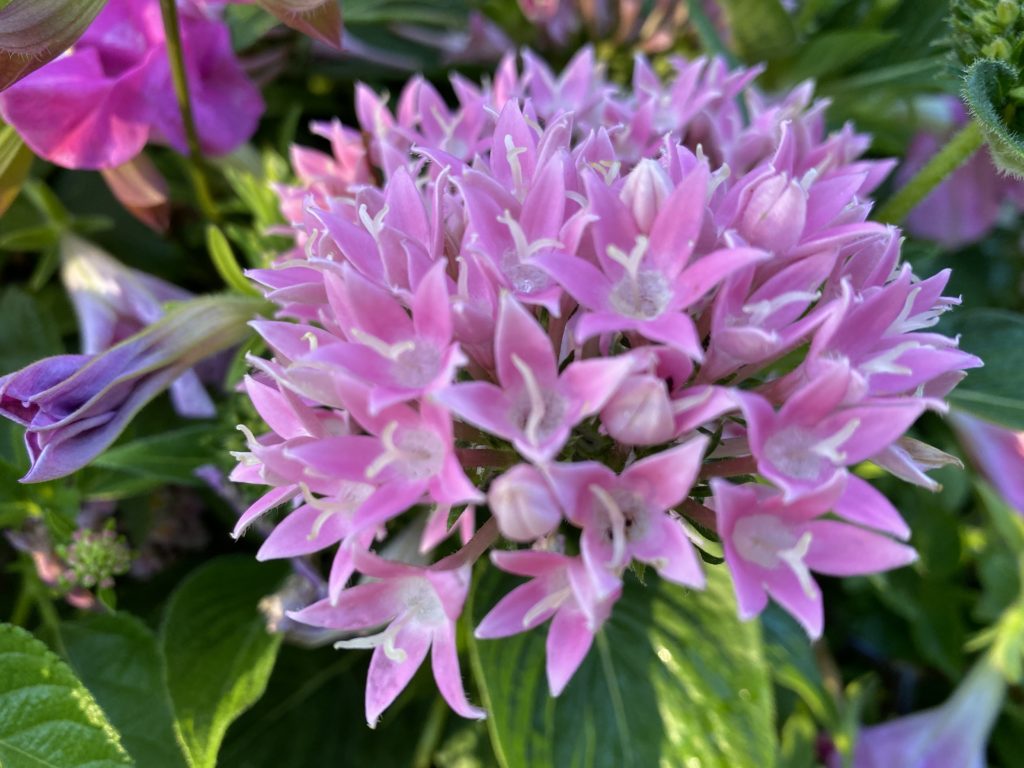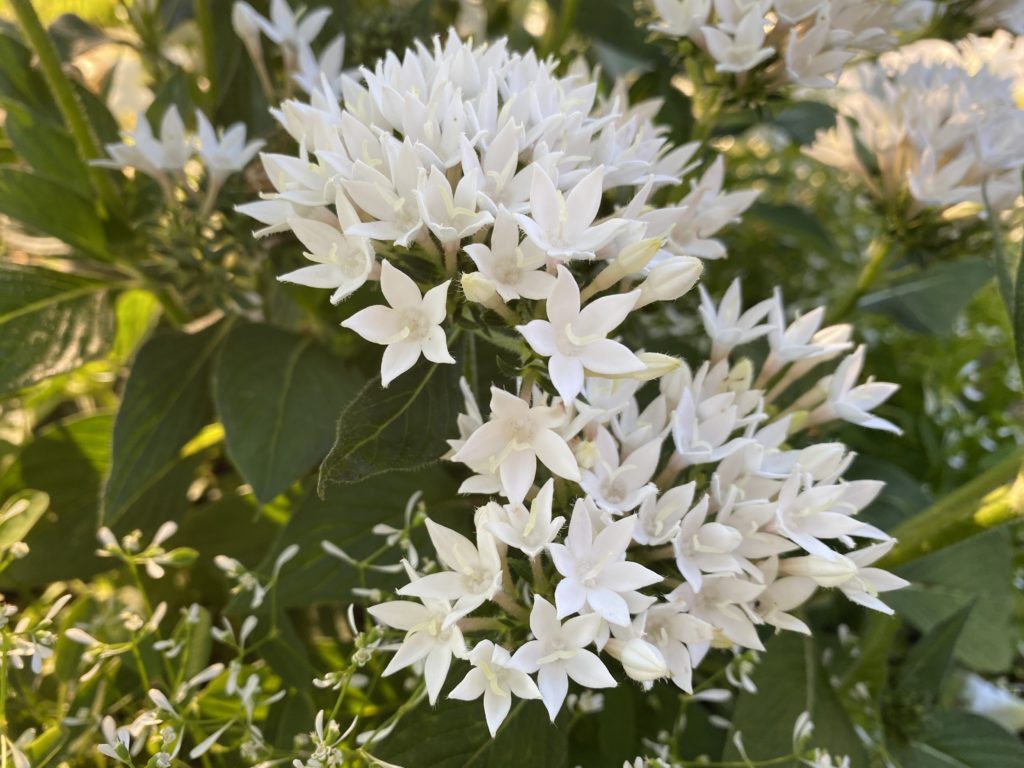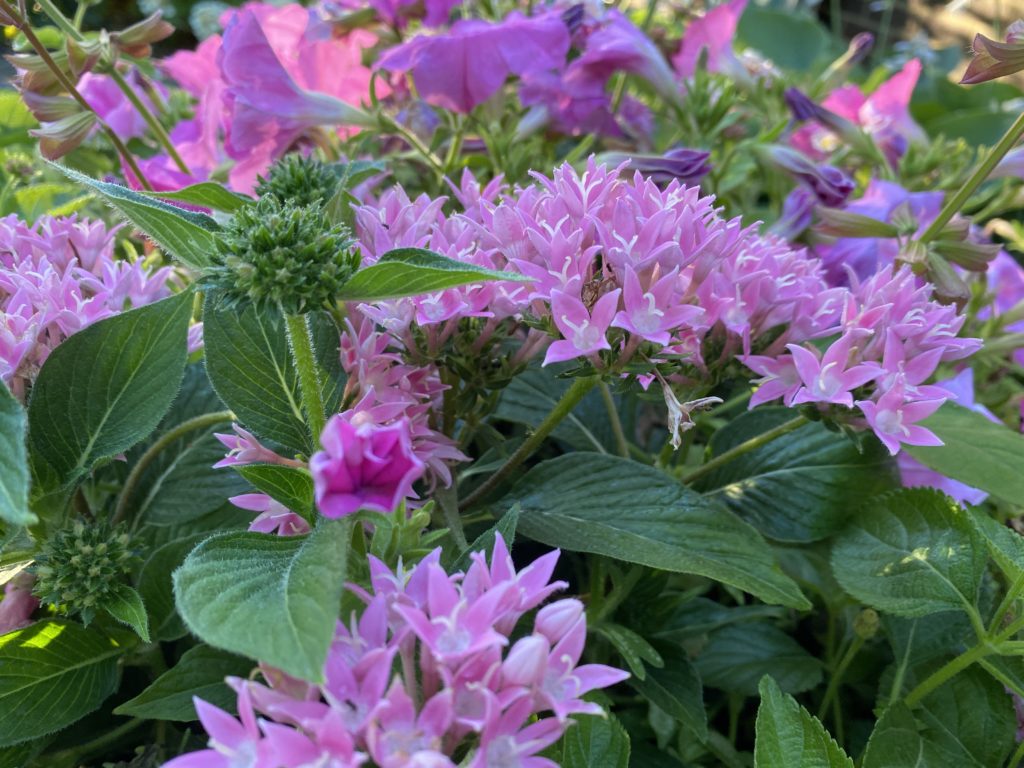
Garden fairies here!
We are garden faires and we have discovered a new flower in the containers on the patio. It’s a flower we haven’t seen around here in, like, never.
Immediately, though we are busy and bedeviled with all kinds of garden tasks to do this summer, we went to work to figure out what it was.
We sent Seedy and Soddy to the containers to take a closer look. Then we sent Honoria and Hortensis to Carol’s library to start looking at books to find pictures. Meanwhile, the rest of us waited to see what they would come up with.
Well, in no time at all, Seedy and Soddy came back with a name for this new-to-us flower because Carol tucked the plant labels in the sides of the pots.
How convenient!
We don’t give Carol credit for much, for reasons as numerous as the stars, but we will give her credit for slipping those tags in the containers like she did.
This is Pentas! Egyptian Star Flower! Or more particularly in the case of the pink one, Pentas lanceolata ‘Starcluster Pink’. It’s a perennial hardy to Zone 11, but since we are in zone 6b, it’s an annual to us.
And such a pretty one!
There’s also a white variety, Pentas lancelolata ‘Starcluster White’.

And probably many other varieties!
We are garden fairies, and we love this flower and cannot fathom that Carol has gardened for nearly… well, we won’t say for how long but it is decades… and this is the first year she’s grown Pentas?
Whatever.
Since we didn’t have to sleuth around to figure out the name of this flower, we did some more investigating to figure out why Carol suddenly bought it this year.
Oh, now we remember!
For some odd reason, Carol decided to plant monochromatic containers—all the same color in each container—but the Angelonia she bought that she thought was white turned out to be pink so she had to take it out of the white container and move it to the pink container. Then, rather late in the spring she headed to the greenhouse to pick out a replacement flower and all the Angelonia was pink so she found the Pentas.
They weren’t in flower so she might have ignored them but a week or so earlier, Dee Nash put the bug in her ear about Pentas. No, not literally a bug. An idea! We are garden fairies.
Anyway, home Carol came home with Pentas, both white and pink, and though it took a while for them to start to bloom, now that they are blooming she has vowed to plant some every year. Every year.
We are garden fairies. Next week, Carol and Dee are even going to talk about them on their podcast which by the way they have started a newsletter for. We think you should subscribe to it. Every week, they are going to publish expanded show notes and if you subscribe, you’ll get them in your email.
We are garden fairies and we don’t see that they’ve added us as writers for the podcast newsletter, so we’ll keep writing right here.
Okay, enough! That’s a lot of time we garden fairies just spent on this blog post. At least 15 minutes! If you will excuse us, the coneflowers are just starting to be ready to open up, and several of us are required to unfurl the petals just so and make sure they look good. We’ll go do that while you gaze on this:

Submitted by:
Violet Greenpea MayDreams, Chief Scribe and Advocate for More Pentas at May Dreams Gardens


I just saved a pink Pentas from the rack of death at the farm store. So this post was timely for me. I am still deciding where to make it a home in the garden, but this made me super happy with my saved plant. Thank you.
I’ve grown Pentas for a while. They are great plants. Here if planted in a spot that stays relatively warm in winter (near pavement with its reflected heat that keeps the soil a bit warmer) they will live over winter, looking pretty bad, but recover come May to be beautiful again.
I’m glad you like your new discovery of pentas! I’ve only grown them once, and they were indeed lovely. However, I was told that they were butterfly flowers, but perhaps that’s only true in the tropical climates where they usually grow. Bees liked them, but Ohio butterflies weren’t interested.